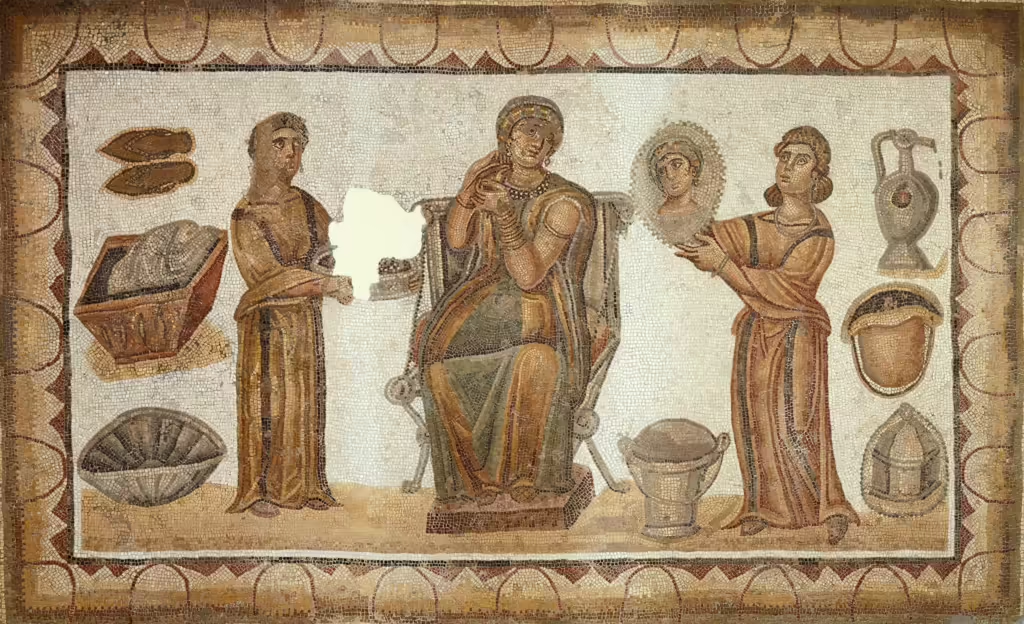When we think of the Roman Empire, visions of grand architecture, military might, and political intrigue often come to mind. However, the Romans’ obsession with personal grooming and hygiene is a fascinating aspect of their culture that has been uncovered through archaeological discoveries across Britain. From an abundance of tweezers to intricate nail cleaners, the artifacts left behind by the Romans provide a unique glimpse into their meticulous approach to self-care and appearance.
The Roman Invasion and the Spread of Grooming Practices
Beginning with the Roman invasion of Britain in A.D. 43, the infusion of Roman culture had a profound impact on the local population. One of the most notable cultural exports was the Romans’ bathhouses and grooming habits, which spread throughout the empire’s conquered territories.
“It is these enormous municipal public baths that take these practices with them as they spread across the empire,” explains Cameron Moffett, a curator at English Heritage. Prior to the Roman arrival, many of these grooming tools, such as tweezers, were virtually non-existent in Britain.
Nail Care and the Unique Nail Cleaner of Gloucestershire
The Romans took great pride in their personal appearance, and this extended to the care of their nails. Archaeologists have uncovered evidence of nail cleaning tools, including the discovery of a unique nail cleaner in Gloucestershire that dates back over 1,500 years.
“This type of V-shaped nail cleaner (which could also serve as a file) only appears at Roman-era sites in Britain,” says Alex Thomson, a project manager for Oxford Cotswold Archaeology. “No one knows quite why, but it was something that was developed in Britain, and so you simply do not get them on the continent.”
The presence of these specialized nail care tools suggests that the Romans placed a significant emphasis on maintaining a well-groomed appearance, even in the far-flung corners of their empire.
Body Hair Removal: A Controversial Trend Among the Romans
One of the more intriguing personal grooming practices of the Romans was the removal of body hair, particularly among the wealthy elite. Both men and women would use tweezers to pluck out unwanted hairs, or have an attendant or enslaved person do so for them in the privacy of their homes or at the public baths.
However, not everyone approved of this trend. The philosopher Seneca, who lived in Rome during the first century A.D., complained in a letter about the “skinny armpit-hair plucker” whose “cries are shrill so as to draw people’s attention and never stop except when he’s doing his job and making someone else shriek for him.”
While Seneca’s description may be exaggerated, it nonetheless highlights the prevalence of this grooming habit and the potential social stigma associated with it.
Skin Scraping and the Strigil: A Unique Roman Bathing Ritual
Another distinctive aspect of Roman grooming was the use of the strigil, a bronze tool that was used to scrape the skin clean after bathing. At the public baths, Roman men and women would cover their bodies in oil, then use the strigil to remove the oil, along with any dirt and sweat on their skin.
Archaeologists have discovered “toiletry sets” containing strigils connected to oil containers, as well as strigils buried in graves, suggesting a strong association between the tool and athletic or hygienic activities.
Ear Cleaning: A Surprising Grooming Ritual
Perhaps one of the more unexpected grooming practices of the Romans was their use of “ear picks” or “ear scoops” to clean wax out of their ears. These tools, which could be made of bronze, bone, or even glass, had a pick on one side and a small spoon or scoop on the other.
While the purpose of these tools may seem unusual to modern sensibilities, they were an integral part of the Romans’ meticulous approach to personal hygiene. Archaeologists often find these ear picks and scoops connected together with other grooming items, suggesting they were valued as essential accessories for the well-groomed Roman.
Conclusion
The artifacts uncovered by archaeologists in Britain provide a fascinating glimpse into the grooming habits and personal hygiene practices of the ancient Romans. From the abundance of tweezers and specialized nail cleaners to the use of strigils and ear picks, these discoveries reveal a culture that placed a significant emphasis on maintaining a well-groomed appearance, even in the far-flung corners of their empire.
As we continue to uncover more about the Romans’ obsession with personal care, we gain a deeper understanding of the cultural values and daily routines that shaped their society. These archaeological findings offer a unique and often surprising perspective on the Romans, challenging our preconceptions and inviting us to explore the rich tapestry of their civilization.
